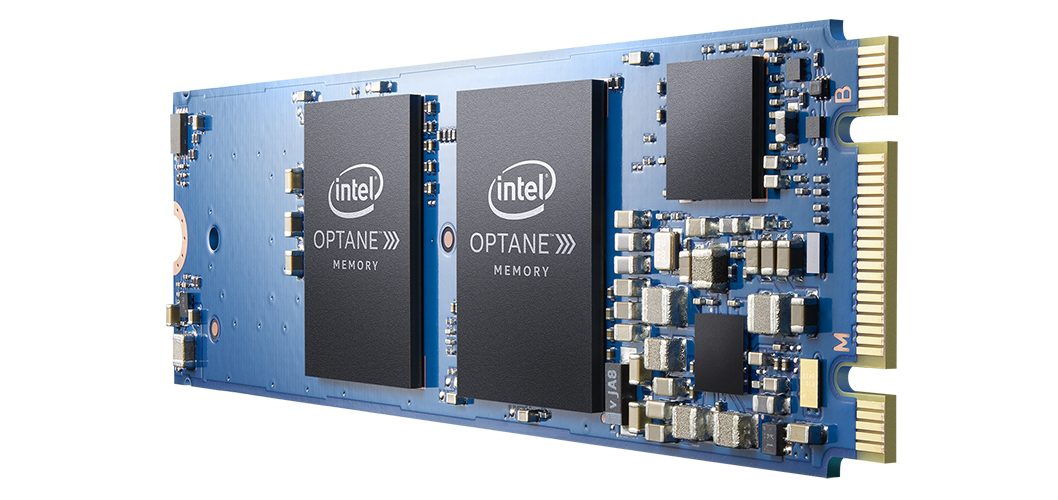Last week in Tech Brew I brought up the fact that Intel launched their enterprise, data center entry for their new line of storage devices, the Intel Optane SSD DC P4800X, a PCIe based Intel Optane SSD using their brand new 3D Xpoint technology inside the individual storage modules, giving read and write speeds that are blazing fast, and start to mimic the look and feel of RAM.
Today, Intel announced their consumer focused efforts of their new 3D XPoint Technology, Intel Optane Memory. The announcement brings us two cache SSDs, 16GB and 32GB in size, in the popular form factor of M.2.

On March 27, 2017, Intel introduced the Intel Optane memory module for desktops. Intel Optane memory and 7th Gen Intel Core processors deliver 2X faster boot time, 28 percent faster system performance, 65 percent faster game level loads. (Credit: Intel Corporation)
Intel is claiming some impressive numbers when paired with a standard hard drive. Performance of up to 67% faster game load times, 65% fast in game load times (think between levels), Chrome launching 5X faster than normal, and Windows booting up 2X as fast as it’s non-optane counterpart system.
How does it do this? For all intents and purposes this is a very fast cache that sits in front of your standard hard disk drive, which is the slowest point in a computer these days. Putting an Intel Optane Memory drive in a 7th generation Intel motherboard will give the performance boost. At this time, Intel will only support Optane Memory on the newer platforms, though the fact that these two drives are in an M.2 form factor there may be workarounds to get it working on older platforms.
The question here that I have is this: How will this really impact uses who already use SSD’s for their primary boot and application drives, and how will this impact workflow for creative professionals who have larger, slower HDDs for storage files but smaller SSDs for applications and operating systems? The 32GB variant is an interesting option if I can have the ability to tell it how to cache and when to work and what with, but otherwise may prove to be a neat concept, but nothing more. The implications are clear in terms of what the impact may be for users who use only standard HDDs, although I’ll wait to see if real world testing holds true to the marketing from Intel.

On March 27, 2017, Intel introduced the Intel Optane memory module for desktops. Intel Optane memory and 7th Gen Intel Core processors deliver 2X faster boot time, 28 percent faster system performance, 65 percent faster game level loads. (Credit: Intel Corporation)
I’m glad to see a consumer implementation from Intel, although I’d like to see a full blown Optane SSD available from them with these speeds, and to see what the performance delta is between these and a standard nVME SSD.
For another great article and overview on the announcement, go check out GamersNexus as Steve has, as always, a great write up. You can also view the official Press Announcement here. You can view the Intel Optane SSD DC P4800X press announcement here.
You can find me on www.geekindad.com when I’m not writing for The GWW, although most of my time is spent here. You can find more of my writing on The GWW here, and follow me on Twitter or Subscribe on YouTube.
